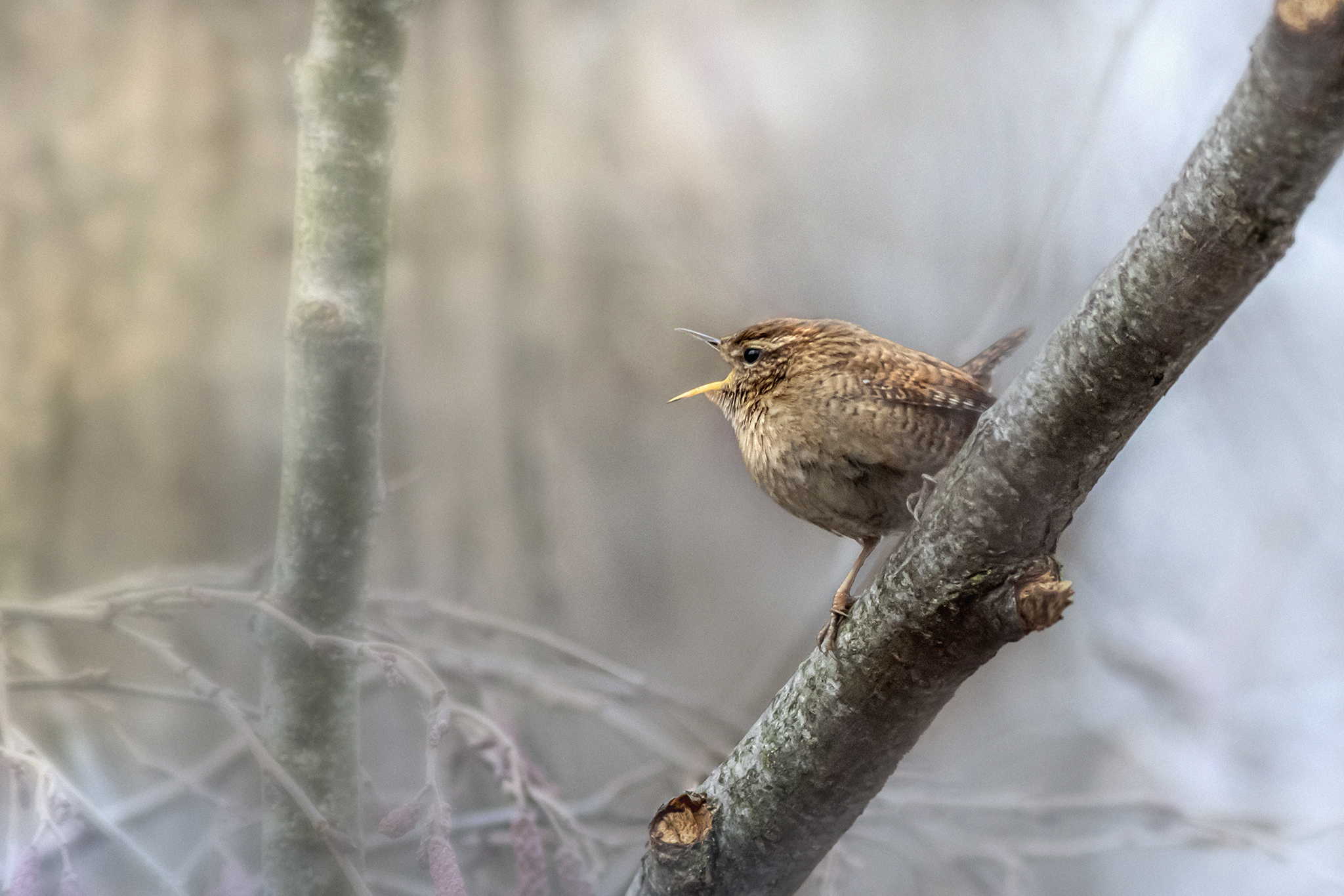Eurasian Wren (Troglodytes troglodytes)
The Eurasian Wren is one of Europe’s smallest and most energetic birds, known for its distinctive upright tail, loud song, and secretive behavior. Despite its tiny size, it has a powerful voice and can be found across a wide range of habitats in Europe, Asia, and North Africa.
Physical Description
- Size: 9–10.5 cm (3.5–4.1 inches)
- Wingspan: 13–17 cm (5.1–6.7 inches)
- Weight: 7–12 grams
- Plumage:
- Warm brown upperparts with fine dark barring on wings and tail
- Pale buff underparts with subtle streaking
- Short, thin beak ideal for picking insects
- Tail often held upright
- Sexes look similar, though males may be slightly larger.
Habitat
- Found across Europe, Asia, and North Africa.
- Prefers dense vegetation, woodlands, hedgerows, scrub, and gardens.
- Often seen foraging close to the ground in fallen leaves, undergrowth, and logs.
- Thrives in urban parks and rural landscapes alike.
Behavior & Diet
- Feeding:
- Primarily insectivorous—feeds on insects, spiders, and larvae.
- Occasionally eats small seeds and berries in winter.
- Hunts by darting through dense vegetation, using its thin beak to pick prey.
- Vocalization:
- Famous for its loud, trilling song, often heard throughout the year.
- Males sing to defend territory, especially in early spring.
- Alarm call is a sharp “tick-tick-tick.”
- Flight:
- Weak flier, prefers hopping and darting through cover.
Breeding & Nesting
- Breeding Season: April–July
- Nests:
- Round, dome-shaped nest made of moss, leaves, and grass.
- Males build multiple nests, and the female chooses the best one.
- Located in tree roots, crevices, walls, or thick vegetation.
- Eggs:
- 5–8 small white eggs with reddish speckles.
- Incubation:
- 12–16 days, mainly by the female.
- Fledging:
- Chicks leave the nest in 15–18 days, remaining dependent on parents for food.
Threats & Conservation
- Threats:
- Harsh winters can reduce populations, but they recover quickly.
- Predation by cats, weasels, and birds of prey.
- Conservation Status:
- Least Concern (LC) on the IUCN Red List.
- One of the most widespread and common birds in its range.
Interesting Facts
- Despite its small size, it has a remarkably loud and complex song.
- In winter, wrens roost together in groups to stay warm—up to 60 birds have been found in one nest!
- The male builds multiple nests, and the female selects the most suitable one for laying eggs.
- Its scientific name Troglodytes means “cave dweller,” referring to its preference for nesting in crevices and sheltered spaces.
Summary
The Eurasian Wren (Troglodytes troglodytes) is a tiny but resilient bird with a powerful voice. Highly adaptable, it thrives in woodlands, gardens, and hedgerows, where it forages energetically among leaves and branches. Its loud song and secretive nature make it a fascinating bird to observe!
Visited 867 times, 22 visit(s) today
Views: 1544
Subscribe to the newsletter:
